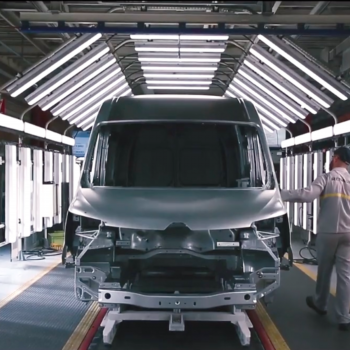1. A digital twin transforms your data to create a holistic view of your production process
Rather than having data sprinkled across multiple systems and tools, a manufacturing digital twin gives you a central place to understand your supply chain, production planning, and asset maintenance analytics. This single view helps your entire organization understand your production planning in the same way.
A holistic view prevents your Sales & Operations team from having one view of your production capability and your supply chain team having another. This can help you provide a consistent internal and external experience no matter which part of your company teams are working in.
This is one of the main reasons that our automaker and aerospace manufacturing clients use a digital twin. They saw that communicating customer deliverables could be disjointed when a customer was promised products within a certain timeframe. If the changes to an order were not properly relayed from the sales team to the shop floor, production lines would be focused on incorrect deliverables and costly to change at the last minute. This created confusion and delays in delivering a customer’s order. Fortunately for manufacturers, a Simulation Digital Twin is able to solve that problem.
2. A digital twin will inherently organize your data
Part of using a digital twin in manufacturing is to transform your data so your team can be more agile and proactive by running a multitude of scenarios on a virtual model. This simulation, fed by your data, gives you an executable model of a physical product or a system.
The majority of digital twins today are based on a simple concept — take real data and run it through a manufacturing simulation software to create a virtual reality. That virtual model, whether it’s a virtual version of a product or a full system, can then be used to test actual expected behavior along with the impact of a vast array of unknowns without ever having to touch the physical version.
Take for example, the COVID-19 crisis that impacted 94% of manufacturers across the globe. Teams are faced with challenges from fluctuating customer demand, insecure supply chains, to dramatic shifts in their workforce. Just one of those challenges alone is enough stress to break a production plan. But by multiplying the complexity, more manufacturers are unable to plan beyond one month, let alone the next quarter or year.
However, with your data powering a Simulation Digital Twin, a full simulation of all of your manufacturing processes, we can run what-if scenarios to understand if shifting production lines or supply chains would improve manufacturing by:
- Increasing production,
- Easing the load on the people involved,
- Optimizing cash flow, and/or
- Improving efficiency
Engineers could even design the manufacturing process to analyze asset health, putting the highest-performing machines in the places they’re needed most.
The objective of the digital twin isn’t to completely overhaul your existing resources and assets. Instead, the digital twin is there to optimize what you currently have and get even more value out of it to help you meet your business objectives with minimal disruption and cost.
3. A digital twin creates a continuous feedback loop between your virtual and physical processes
When your manufacturing data is organized, it’s more usable. Usable data is the foundation of insightful and powerful analytics.
But to keep up with internal and external demands, manufacturers need a way to have their data organized not just once, but continually updating and refreshing to create a powerful connection between your physical and virtual worlds.
The reality is, with the plethora of manufacturing simulation software, there are varying levels of simulation out there – the main difference is whether that simulation creates a partial exchange of information or a true feedback loop.
Often used in a silo by a supply chain or product team, simulations like a digital mirror or a digital shadow create either a static version or one-way transfer of data between your virtual vs physical model. These simulations are easier to set up, but their basic nature comes with limitations when it comes to truly reaching business objectives.
Data Flow in a Digital Model – Manual Data Flow Only
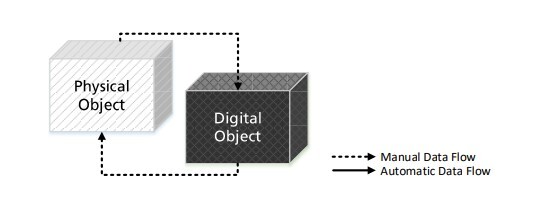
Kritzinger et al. “Digital Twin in Manufacturing” ScienceDirect, 2018, https://bit.ly/2ULFir5.
Data Flow in a Digital Shadow – Automatic Data Flow from Physical to Digital Object
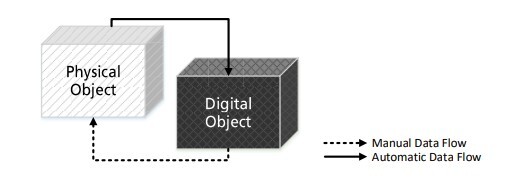
Kritzinger et al. “Digital Twin in Manufacturing” ScienceDirect, 2018, https://bit.ly/2ULFir5.
But a digital twin is the only type of simulation that allows an automatic data flow between the physical and digital objects. While there is certainly a place for digital mirrors and digital shadows, particularly when it comes to needing an isolated view of a product’s functionality, these two simulation types and related software fall short when it comes to improving business and manufacturing processes.
Two-Way Data Flow between Physical and Digital Objects
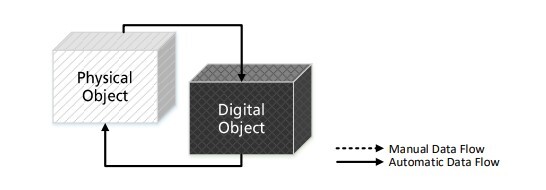
Kritzinger et al. “Digital Twin in Manufacturing” ScienceDirect, 2018, https://bit.ly/2ULFir5.
Here’s a handy comparison of the different types of digital simulations we typically see in the manufacturing world:
Simulation Type | Data Flow | Possible Use Cases |
| Digital Mirror | Manual data flow only | Models of new products |
| Models of a single physical object |
| Simulations of planned factories |
| Digital Shadow | Automatic data flow from physical object to digital object | All of the use cases from a Digital Mirror, but a change in state of the physical object leads to a change of state in the digital object, but not vice versa. |
| No data flow from digital to physical object |
| Digital Twin | Continuous feedback loop between physical and digital objects with automatic data flow | All of the above uses cases but a change in state of the physical object directly changes the virtual model, and vice versa. |
| Production planning and control |
| Asset maintenance strategy |
| Layout planning |
What do you want to accomplish with your digital twin?
When most teams start their journey using manufacturing simulation, they often start by thinking about their data. They look at their sources, the current state of their data, and how it needs to be organized in order to create a digital model.
And this made sense in the more rudimentary world of simulation where teams were trying to build a virtual model of one product or a portion of their supply chain.
However, in the case of a digital twin, the power to simulate an entire process and system shifts the focus immediately. The focus is no longer on using data to build something that is simply a sum of its parts. Instead, the conversation starts at a higher level and begins with what you need and want to accomplish as a business – knowing that a digital twin will help you find a path forward.
And that therein is the beauty of a digital twin and all of the power that Industry 4.0 technologies bring.
The value of the digital twin increases as you apply it across more business functions and processes, allowing it to touch and optimize every single core aspect of your business.
A core advantage of Simulation Digital Twins is the capacity for clients to start small, secure quick wins by deploying Digital Twins of specific parts of a business, and then scale the deployment across the entire business.
Michel Morvan – Co Founder – Cosmo Tech

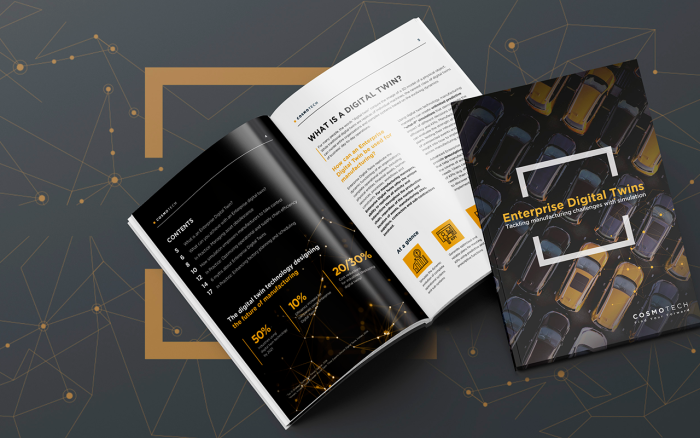
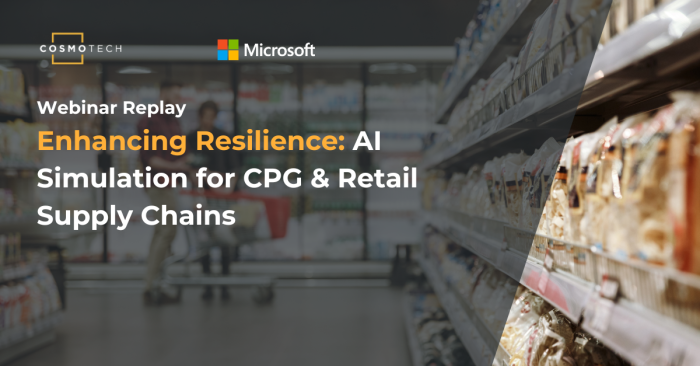
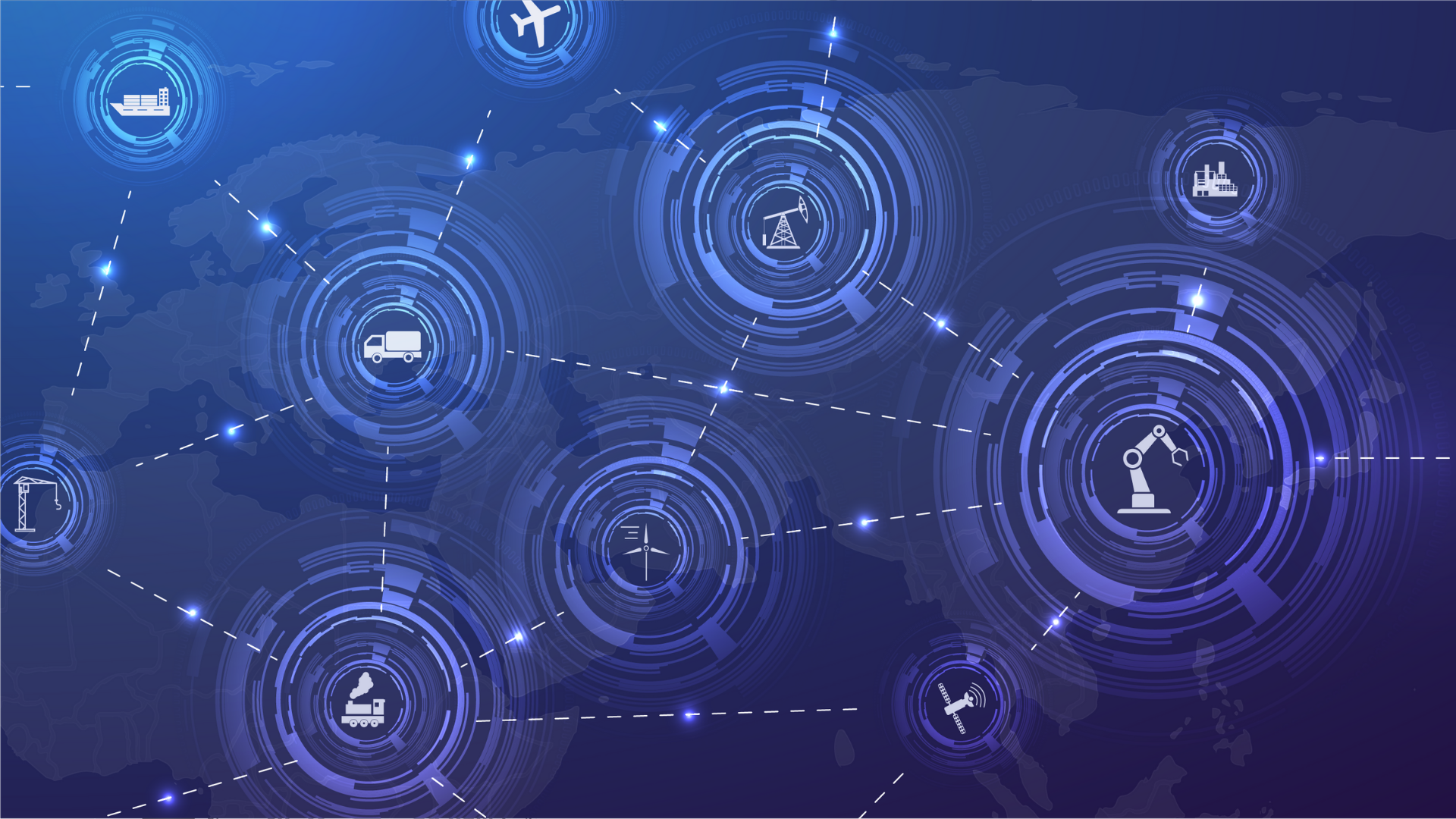




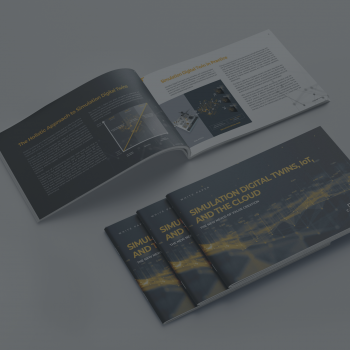
![[Video] Traditional vs Resilient Supply Chain Planning: Which side are you on?](jpg/adobestock_101964830-350x350.jpg)
